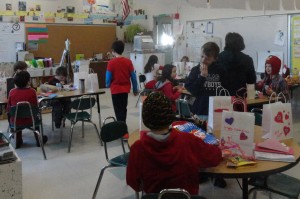 Each week we add to our school timeline to keep track of our learning accomplishments and celebrations. This week was the first time in five weeks that we’ve been at school for all five days. Wa-hoo! It was great to work consistently at our tasks and to really feel the impact of new learning routines designed to develop metacognition and self-reflection.
Each week we add to our school timeline to keep track of our learning accomplishments and celebrations. This week was the first time in five weeks that we’ve been at school for all five days. Wa-hoo! It was great to work consistently at our tasks and to really feel the impact of new learning routines designed to develop metacognition and self-reflection.
Knowing Yourself as a Learner
Knowing Yourself as a Member of a Learning Community – S.E.L.
This week we have begun daily recording of something new we have noticed or learned, wondered about or questioned in the last twenty-four hours. The expression “you learn something new every day” is common enough, but have you ever wondered if that is really true? This week we began this daily record of learning and wondering. We take 10 minutes out of our morning to think and write about what we have learned in the last twenty-four hours. The learning could happen anywhere in the day. We’ve added the notion of noticing and wondering into the mix because questioning is the beginning of learning. The children are encouraged to write for the full 10 minutes so they can record not only the simple fact, but also record the related details and information about why it was worth noting in their learning log.
We hope that the act of keeping this daily record will encourage children to be more aware of what they are learning and help them take a more active role in their own learning process. Some in the class thought that this daily routine might get a little boring, but others thought it would be a cool record to look back on. Having attempted to do this myself, I know it is challenge. Learning something new every day takes thought, attention and effort. We invite you to join us in this challenge.
We’ve also been working to notice how we “compassion it” at school and are trying to consider how we work to make our little piece of the world kinder, happier and more peaceful.
The Science of Gardening
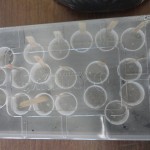
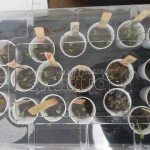
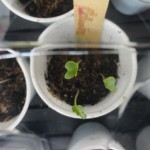
 Through the amazing generosity of community member, Bob Hamilton, the third grade is piloting a square foot gardening project. The ultimate goal of this project is that every student will have the opportunity to grow and harvest vegetables each year either in the fall or the spring. Some of the produce will be used in the cafeteria and some will be for the children to bring home to enjoy with their families. Our grade is starting this project this year to learn how it will work and find ways to ensure its success for all when it is fully launched across the entire school.
Through the amazing generosity of community member, Bob Hamilton, the third grade is piloting a square foot gardening project. The ultimate goal of this project is that every student will have the opportunity to grow and harvest vegetables each year either in the fall or the spring. Some of the produce will be used in the cafeteria and some will be for the children to bring home to enjoy with their families. Our grade is starting this project this year to learn how it will work and find ways to ensure its success for all when it is fully launched across the entire school.
Our class started with broccoli. We started the seeds last Friday and by Monday most of the seedling had sprouted. (That was something many of the children noted in the learning logs.) The next day they were an inch or two tall and reaching for the sun. They are now under a grow light and are ready for the first transplant into a larger four-pack cell where they will grow for two weeks before being ready for the next transplant into a four inch pot. At that point some of the seedlings will come home, while others will be planted in beds out in the greenhouse. Each student will have one square foot to maintain. In addition to broccoli we will be growing some spinach, kale and endive lettuce so we can compare the growing habits and later the tastes of these cold crops. We are enjoying our sprouts!
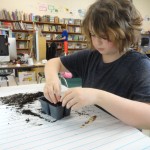
Working to Add and Subtract
We have been working with three- and four-digit numbers to practice using the standard algorithm with addition and subtraction. Often this is a real challenge – especially with subtraction. Your children have really embraced this process and can see how trading and regrouping works. This work has helped the children see the benefit of knowing facts cold without needing to take the time to count up or down.
Again, thank you for all the work you are doing at home to help your children practice and master these facts. The children have been having fun playing each other’s fact games. We’ve got a lot of fact work going on in the classroom each day.
State Studies
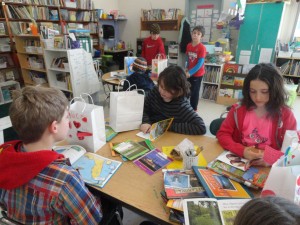 I imagine you’ve heard about the state your child will be exploring and learning about yesterday. They were very excited to finally find which state was theirs. We are approaching this project a bit differently this year. We are starting with an exploration of the natural habitats of the state and the children will be researching an animal important to their state. They will be teaching others about it and the habitat it is from. They will be learning about concepts of food webs, food chains and the interconnectedness of plants and animals.
I imagine you’ve heard about the state your child will be exploring and learning about yesterday. They were very excited to finally find which state was theirs. We are approaching this project a bit differently this year. We are starting with an exploration of the natural habitats of the state and the children will be researching an animal important to their state. They will be teaching others about it and the habitat it is from. They will be learning about concepts of food webs, food chains and the interconnectedness of plants and animals.
Later on in the spring the children will begin researching important natural, historical and manmade landmarks from their states and famous people who may come from the state. The children will be using this information to create their float for the Parade of the States in May. Most of the children attended last year’s parade practice so they have some idea of what to expect. I have posted some pictures from past parades on our blog. When the time comes we will send home detailed information about the floats, their size and suggestions for bases, etc. Please don’t worry – the children should be in the lead although they will need your help and support when the time comes.
Bits and Pieces –
- We’re enjoying The Quirks and the Quirkalicious Birthday. When we’re done we are going to have a Quirkalicious Birthday party in celebration of all of the birthdays in the class.
- Common Core State Testing begins for 3rd grade on March 17. We will have three mornings of Language Arts testing and two mornings of Math testing. We will likely have completed the testing by March 25.
- There will be a Parent Information Night about the testing on March 17

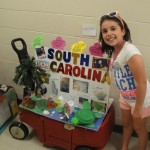



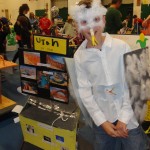

 Ranger in Time is the first book in a new series by Kate Messner. Ranger has trained to be a rescue dog with his owner, Luke. He knows how to follow a scent. He knows how to pay attention to changes happening all around. He knows about water rescue and about staying close for comfort. The only thing Ranger can’t quite resist are squirrels. Whenever they come into view, he just has to chase them. A rescue dog can’t do that, and so while Ranger knows how to do everything, he can’t be certified.
Ranger in Time is the first book in a new series by Kate Messner. Ranger has trained to be a rescue dog with his owner, Luke. He knows how to follow a scent. He knows how to pay attention to changes happening all around. He knows about water rescue and about staying close for comfort. The only thing Ranger can’t quite resist are squirrels. Whenever they come into view, he just has to chase them. A rescue dog can’t do that, and so while Ranger knows how to do everything, he can’t be certified.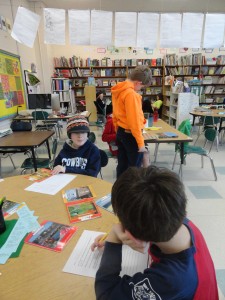
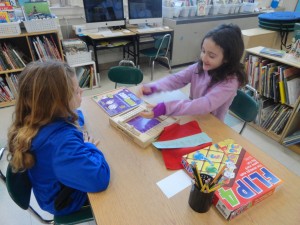
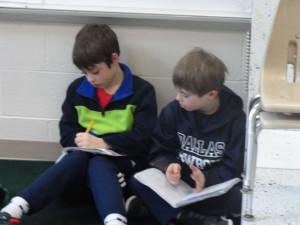




 A Poem in Your Pocket
A Poem in Your Pocket  Meghan McCarthy’s
Meghan McCarthy’s 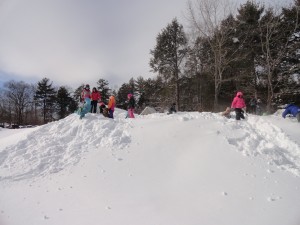



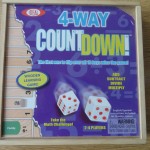

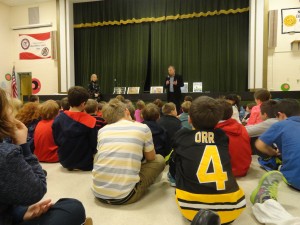
 I read about Joseph Cornell, a man who collected things all around his neighborhood – feathers, antique postcards, buttons or interesting advertisements. Then he put those things together into display boxes. The picture book biography by Jeanette Winter said that he stayed in his own home his whole life taking care of his younger brother with cerebral palsy and creating his boxes in his basement workshop. He was quiet and introverted, but sometimes he’d share his dreams and sweets with the children in his neighborhood. There are some photographs at the end of the book showing scenes from his life and his boxes. There are some more
I read about Joseph Cornell, a man who collected things all around his neighborhood – feathers, antique postcards, buttons or interesting advertisements. Then he put those things together into display boxes. The picture book biography by Jeanette Winter said that he stayed in his own home his whole life taking care of his younger brother with cerebral palsy and creating his boxes in his basement workshop. He was quiet and introverted, but sometimes he’d share his dreams and sweets with the children in his neighborhood. There are some photographs at the end of the book showing scenes from his life and his boxes. There are some more  Ever since I held my first fossil in my hand, I have wanted to find my own. I always look at rocks and collect them from wherever I go. Of course, I’ve never seriously researched likely places for finding them and intentionally gone there in search of a trilobite or ammonite, but I always look. That’s why Mary Anning was an interesting person to learn about and to realize that she was the finder of the first complete fossils of an ichthyosuar and a plesiosaur and that she sold fossils to make a living. I know she had to work really hard and finding fossils wasn’t all that glamorous, but I still think it’s cool. “
Ever since I held my first fossil in my hand, I have wanted to find my own. I always look at rocks and collect them from wherever I go. Of course, I’ve never seriously researched likely places for finding them and intentionally gone there in search of a trilobite or ammonite, but I always look. That’s why Mary Anning was an interesting person to learn about and to realize that she was the finder of the first complete fossils of an ichthyosuar and a plesiosaur and that she sold fossils to make a living. I know she had to work really hard and finding fossils wasn’t all that glamorous, but I still think it’s cool. “ Reading
Reading